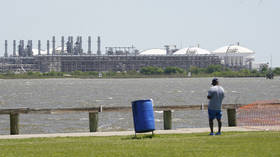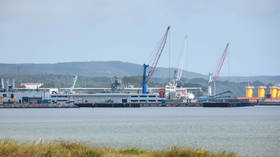Global LNG demand to surge 50% – Shell

Global demand for liquefied natural gas will increase more than 50% in less than two decades, according to the LNG Outlook 2024 released this week by British energy giant Shell.
A surge in demand by 2040 is expected due to economic growth projected for China, as well as for South Asian and Southeast Asian nations that are rapidly switching from coal to gas in their industrial sectors.
Last year, global trade in the super-chilled fuel amounted to 404 million tons, up from the 397 million tons recorded in 2022, according to the report. Tight supplies of LNG are “constraining growth while maintaining prices and price volatility above historic averages,” the report emphasizes.
Shell also said that demand for natural gas has peaked in some regions but is still rising globally. It expects demand for LNG to climb to 685 million tons per year by 2040.
“China is likely to dominate LNG demand growth this decade as its industry seeks to cut carbon emissions by switching from coal to gas,” Steve Hill, executive vice president for Shell Energy said, commenting on the forecast.
“With China’s coal-based steel sector accounting for more emissions than the total emissions of the UK, Germany and Türkiye combined, gas has an essential role to play in tackling one of the world’s biggest sources of carbon emissions and local air pollution,” he added.
Declining domestic gas production in some parts of South Asia and Southeast Asia is expected to drive a surge in demand for LNG over the following decade, as these economies increasingly need fuel “for gas-fired power plants or industry.” At the same time, nations in South Asia and Southeast Asia would need significant investments in gas import infrastructure.
“Despite a well-supplied global market in 2023, the lack of Russian pipeline gas supply to Europe and a limited amount of LNG supply growth over the last year mean that the global gas market remains structurally tight,” Shell said.
For more stories on economy & finance visit RT's business section














